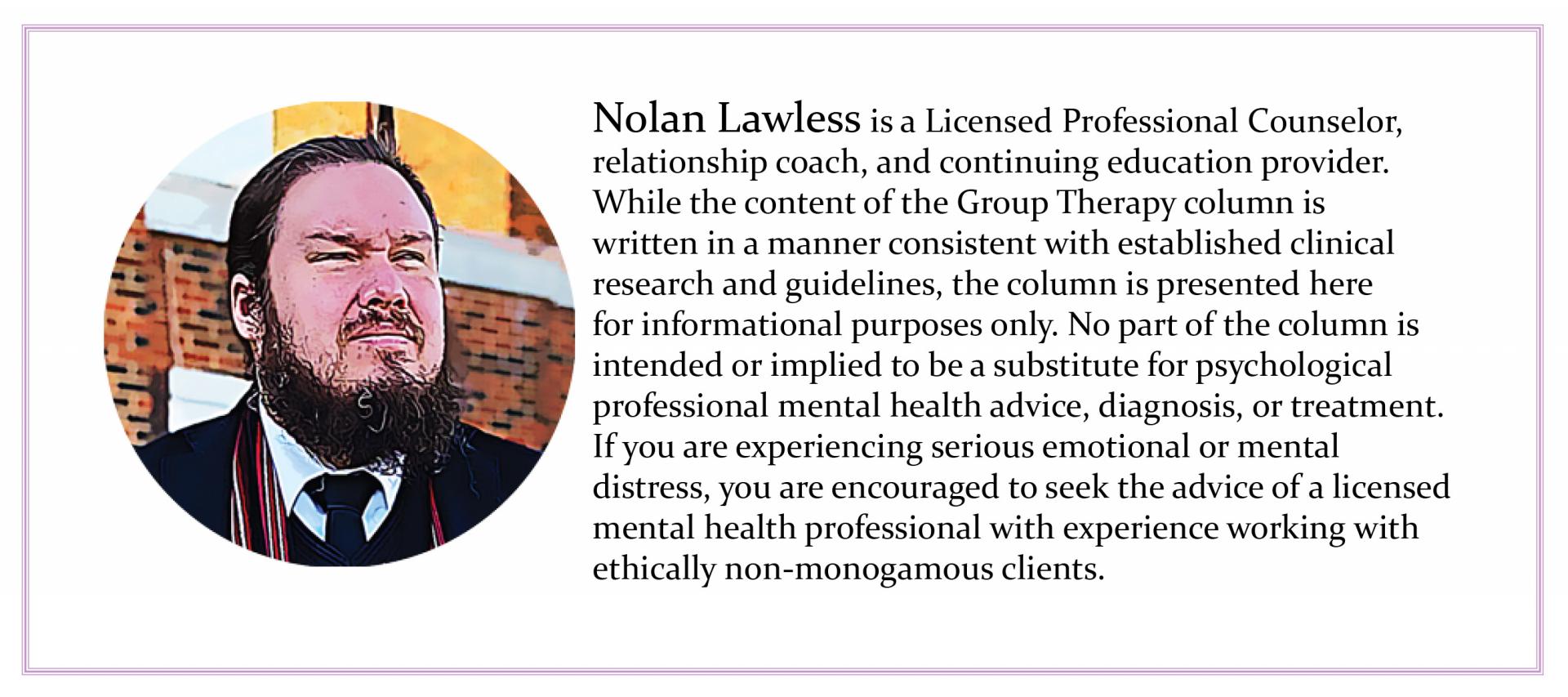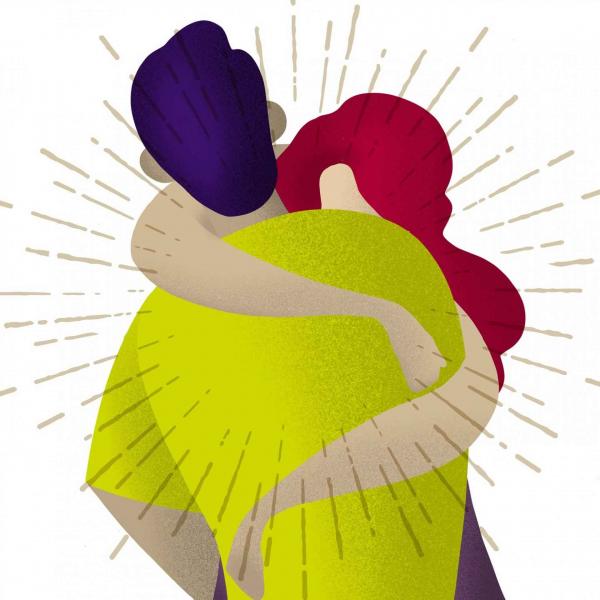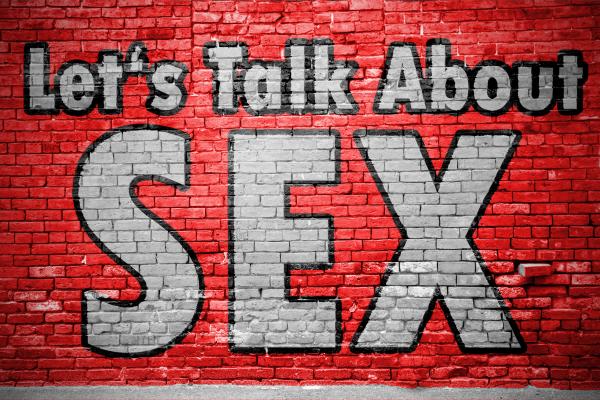I'm Calling Security

Submitted to SDC courtesy of ENM Lifestyle Magazine | Written by ENM Magazine columnist Nolan Lawless
What does it mean to feel secure? The word conjures up lots of ideas, many that may appear contradictory. Security may mean the freedom to be ourselves or the confidence that we are an important part of something bigger than we are. In this article, Nolan Lawless explores how we form security-based attachments and how the foundation of these needs for security forms early in life.
What is Security in Relationships?
What does it mean to feel secure? The word conjures up lots of ideas, many that may appear contradictory. Security may mean the freedom to be ourselves, or the confidence that we are an important part of something bigger than we are. It may mean having somewhere to call home, while also being able to explore the unfamiliar without a sense of being leashed. Security, especially in the context of interpersonal human relationships, is vitally important and, often, seemingly impossible to obtain.
Research into attachment has existed in psychology for about as long as the discipline has. Psychologists Harry Harlow, John Bowlby, and Mary Ainsworth each did pioneering research on maternal attachment and its effects on later relationships as far back as the 1930s. In the world of ENM, however, looking at how attachment works is relatively new. At the forefront of this new examination is Jessica Fern, a psychotherapist, author, and researcher who has begun applying existing attachment theory to non-monogamous relationships. With Jessica’s permission, I have included some of her groundbreaking work in this column.
Attachment Styles
To find the origins of how we attach to others, says Bowlby, we have to go back to infancy, and specifically our relationships with our mothers. (Freud, it turns out, wasn’t always wrong.) As infants, we must seek out connections to others for our most basic needs; our literal survival depends on it. We have a need, we cry, and we hope someone, most often our mother, will be there to meet whatever need we have. If we learn through experience that we can count on our caregiver to adequately meet our needs most of the time, we develop a secure type of attachment to that caregiver and trust them to continue meeting needs in the future. If, however, we learn that our caregiver is generally unreliable or absent, our attachment to that person becomes insecure. The method of attachment we develop at this early point in our lives significantly shapes who we are as humans and gets re-enacted in adult relationships.
Of course, this is a tremendous oversimplification of ideas that fill literal volumes of psychology texts. It does suit our purposes adequately to be able to move forward, but with two important caveats. The first is that creating secure attachment between infant and caregiver does not require that every need is met perfectly every time; conversely, an insecure attachment may happen through no fault of the caregiver, but as a consequence of illness, accident, or other circumstances that prevent the child’s needs from being met. The second is that, while we do generally continue to replicate our childhood attachment style in adult relationships, adults who had insecurely attached childhoods can learn to overcome those early deficits to securely attach with adult partners (called “earned secure attachment”).
Far more of us have insecure attachment styles than they realize, and part of the reason for this is that we learn from the systems we participate in to substitute secure attachment with structures to “prop up” insecure relationships. Monogamy itself, with an emphasis on total focus on one other person and the rules and norms in place to discourage deviation, is a structure that often is used as a stand-in for security. ENM is, comparatively, a less secure relationship structure, meaning that insecurities in our attachment styles are more likely to be exposed, especially in the process of opening an existing relationship. We often try to counter this with new structures: relationship contracts, rules about who and when and how, veto power, and the list goes on. However, these sorts of structures are no more stable than monogamy and stand in the way of building healthy attachment from shared relational experience.
There is often an assumption that insecurely attached people are attracted to ENM, or that those who practice ENM do so because they need to (depending on who’s making the assumption), either hoard partners to compensate for a lack of childhood attachment or avoid commitment because they can’t fully attach to other people. While there is unfortunately little research in this area yet, what we do have points to neither assumption being true. There is no known correlation between insecure attachment and “hoarding partners,” whatever that actually means, and ENM folks actually commit at least as often, and as securely, as monogamous folks. ENM practitioners are also just as likely to have a secure style of attachment as the general population. (Turns out, we’re people, too. Who knew?)
Safe Haven & Secure Base
So, we know that having secure attachment in our relationships is the ideal scenario and, as I mentioned above, complex relationship agreements are not going to get you there. To successfully create that security, two things need to ideally happen. The first, and most important, is to work towards resolving insecure attachments from childhood and moving towards a point of earned security. (This is best and most effectively done with the support of a professional coach or counselor.) The second is to understand the roles that we play in secure relationships: safe haven and secure base.
Picture an island with a protected cove, a place where the storms and the waves and the creatures of the deep can’t reach, a place where vigilance can give way to relaxation. This is the essence of a safe haven. A safe haven relationship is a place where safety is assured, where wounds can be bandaged and sorrows can be processed, where our authentic selves can be seen and loved for who we are. It is a place of support, in both emotional and tangible ways.
A secure base, on the other hand, is less about safety and more about growth. A secure base relationship encourages us to chase our dreams, to take (appropriate) risks, and, if necessary, to dust ourselves off and try again. That isn’t to say that secure bases can’t provide a place for rest, but that rest is temporary and purposeful. A secure base relationship sees our potential, even if we don’t, and provides encouragement and support to achieve what truly matters to us.
In monogamous relationships, the expectation is that the same person will simultaneously be both safe haven and secure base, which can be difficult at best. One of the major advantages of ENM is that each relationship can play its own role, whether that be as a safe haven, secure base, or a mixture of the two. These roles don’t have to be static, and a person who is a safe haven for one partner may be a secure base for others. That being said, most people, and most relationships, will settle into a space that fits most comfortably for them, and in that space everyone involved can feel secure, connected, and loved.
Attachment is a tremendously complex topic, and far more important (and interesting) than I can convey in two pages. If this column piqued your interest, I encourage you to check out Polysecure, Jessica Fern’s new book, out October 2020.
By Nolan Lawless
This article originally appeared in the October issue of ENM Magazine. Click the banner below to find this issue and more.









